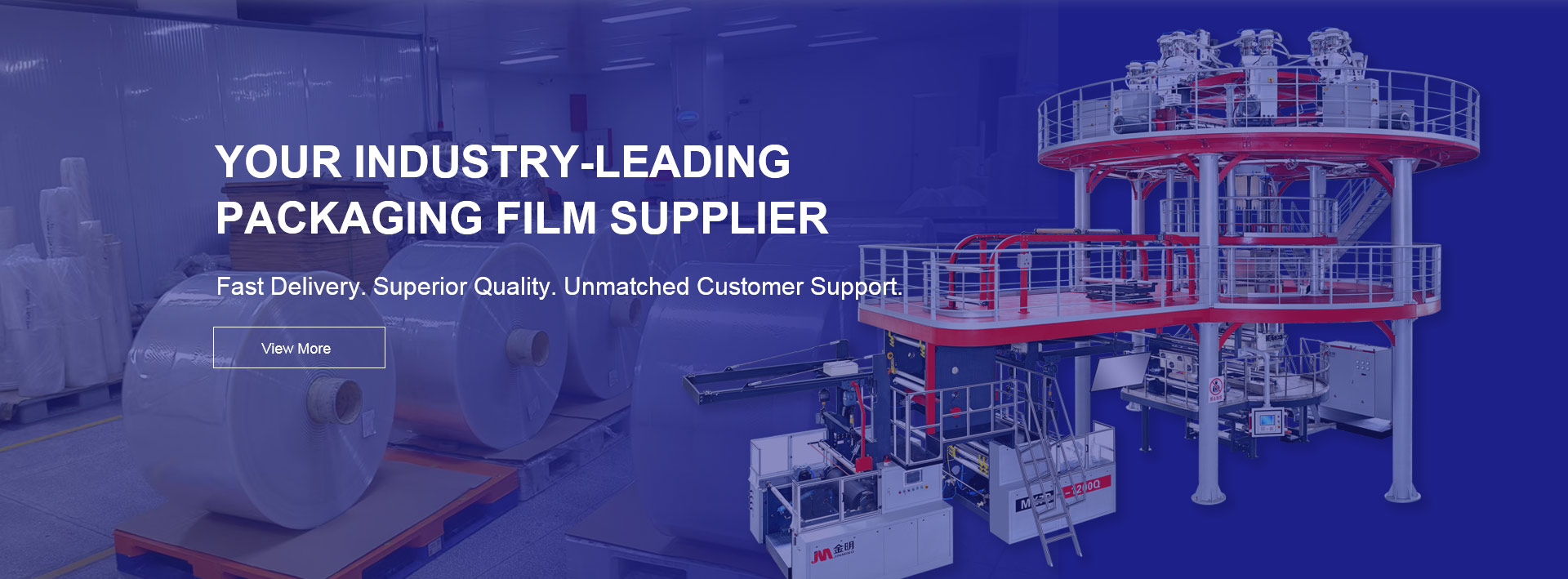
Barrier films are advanced multilayer materials designed to prevent the transmission of moisture, oxygen, and other gases that can deteriorate the quality of packaged products. These films play an essential role in food packaging, pharmaceuticals, and electronics protection, where maintaining product integrity and shelf life is critical. Understanding how barrier films function helps industries choose the right material and structure for optimal performance.
Barrier films typically consist of several layers, each serving a distinct function. The outer layer provides mechanical strength and printability, the middle layer serves as the core barrier against moisture and gases, and the inner layer offers sealing properties for packaging applications. Common materials used include PET, BOPP, nylon, EVOH, PVDC, and aluminum foil. These layers are bonded through co-extrusion, lamination, or coating to achieve uniform barrier performance and durability.
| Layer | Function | Common Materials |
|---|---|---|
| Outer Layer | Protection and printability | PET, BOPP |
| Core Layer | Moisture and gas barrier | EVOH, PVDC, Aluminum |
| Inner Layer | Sealability and adhesion | PE, CPP |
Each material contributes differently to barrier performance. For instance, aluminum foil provides nearly complete impermeability to gas and moisture, while EVOH offers high oxygen resistance with lower environmental impact.
Moisture barrier effectiveness depends on the film’s water vapor transmission rate (WVTR), which measures how much water vapor can pass through the film over a certain time. Materials with a tight molecular structure, such as PET and aluminum foil, create dense networks that water molecules cannot easily penetrate. EVOH and PVDC also perform well due to their polar molecular groups that attract and immobilize water molecules, reducing permeability.
In laminated films, combining hydrophobic and hydrophilic layers enhances performance further. The hydrophobic layers repel moisture from the surface, while the hydrophilic barrier layers absorb and neutralize any residual vapor, achieving WVTR values as low as 0.1 g/m²·day under standard testing conditions. This is crucial for products sensitive to humidity, such as powdered foods and pharmaceuticals.
Gas barrier performance is determined by the oxygen transmission rate (OTR). The smaller the OTR, the better the film prevents oxygen penetration. Oxygen molecules move through films by diffusion, and the resistance depends on polymer density and crystallinity. High-crystallinity materials, such as oriented PET or EVOH, create fewer free paths for gas molecules to pass through. For example, EVOH films can reach OTR values below 0.2 cc/m²·day·atm, making them ideal for vacuum-sealed and modified atmosphere packaging.
Some films enhance gas blocking by using nanocomposite coatings. Adding materials like SiOx or AlOx forms a transparent yet highly dense inorganic layer that significantly reduces permeability without sacrificing flexibility or clarity. These advanced coatings make barrier films suitable for high-performance applications like flexible electronics or solar panel encapsulation.
Barrier performance is not static—it changes under different environmental conditions. As temperature and humidity rise, polymer chains expand and allow more molecular movement, leading to higher WVTR and OTR values. This is why testing standards such as ASTM F1249 or ISO 15106 specify measurement at controlled conditions. Films designed for tropical or humid regions often use multilayer structures to maintain stable barrier function despite fluctuations in temperature and moisture.
Manufacturers also introduce cross-linking and surface coatings to stabilize barrier performance under heat and moisture stress. For instance, heat-resistant coatings can maintain barrier integrity even at 80°C, which is essential for pasteurization or sterilization packaging.
Barrier films are indispensable in modern packaging and material protection:
food packaging: Extends the freshness of snacks, coffee, dried fruits, and ready-to-eat meals by blocking oxygen and moisture that cause spoilage and rancidity.
Pharmaceuticals: Protects moisture-sensitive tablets and capsules, ensuring efficacy and compliance with pharmaceutical-grade standards.
Electronics: Prevents oxidation and corrosion of sensitive components, especially in OLED displays and lithium batteries.
Agricultural and Chemical Products: Maintains chemical stability and prevents gas exchange that may lead to degradation.
Industrial Components: Used as protective wrapping for precision machinery and optical materials during storage or transport.
Each application demands specific barrier levels and mechanical properties. Selecting the right combination of materials and thickness ensures reliable protection and product longevity.
JINBORUN offers a comprehensive range of barrier film materials engineered for advanced packaging and industrial use. The company focuses on multilayer composite films with low oxygen and moisture permeability, designed through precision extrusion and coating technologies. Their films achieve excellent balance between strength, flexibility, and barrier function, meeting the needs of food, medical, and electronic sectors. JINBORUN’s commitment to quality and material innovation provides reliable solutions for global customers seeking stable performance and extended product shelf life.
Barrier films achieve their protective properties through carefully engineered multilayer structures, precise material selection, and advanced coating technologies. By minimizing water vapor and gas transmission, these films preserve product quality across various industries. As demand for eco-friendly and high-barrier solutions grows, manufacturers like JINBORUN continue to develop innovative films that combine environmental responsibility with superior performance.